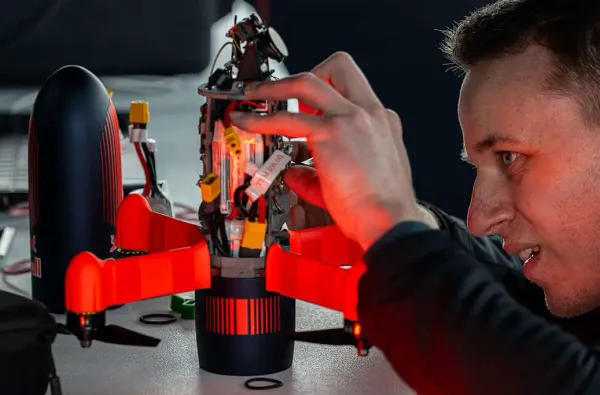Chris Rosser, an expert in drone technology, recently compared different magnet types used in FPV racing drone motors. In a new video, Chris takes a deep dive into how strong neodymium magnets are made and directly compares sintered versus bonded magnets.
Overview
In the video, Chris looks at motors from NewBeeDrone - the Smooth V2 2306.5 and Flow V2 2306.5. He thoroughly tests them on the bench and thrust stand. The key focus is the Smooth V2's unique single piece magnet design.
How Neodymium Magnets Are Made
First, Chris explains how the strongest neodymium magnets are typically manufactured:
- Melting a mix of neodymium, iron, boron and other elements under vacuum at extreme heat
- Pouring the molten metal over a chilled roller for rapid cooling
- Milling the flakes and mixing with hydrogen gas to make them brittle
- Crushing the flakes into a fine powder
- Compressing the powder in a magnetic field to align domains
- Sintering at 1100C to bond the compacted powder
- Machining into shape and nickel/copper plating to prevent oxidation
- Final magnetization with a powerful electromagnet





Comparing Sintered Versus Bonded Magnets
The Smooth V2 uses a unique single piece bonded neodymium magnet, while the Flow V2 uses sintered magnets.


Key differences:
- Bonded magnets use a polymer binder, allowing magnetization in any direction.
- Sintered magnets have a preferred magnetization direction.
- Bonded magnets generate a lower peak magnetic field strength - about 90% of sintered.
- But bonded magnets are more durable and easier to assemble.
Chris found the sintered magnets in the Flow V2 performed better, with 10% higher field strength. Swapping the rotor did show a performance difference.
Test Results
Chris did extensive testing to compare the performance of the bonded versus sintered magnets. Here are some of the key results:
- The motors tested below their stated KV ratings. The Smooth V2 tested about 100 RPM lower than its 1750 KV spec.
- Swapping the rotor showed the bonded magnet increased KV, as expected with lower magnetic field strength.
- The Smooth V2 produced much less thrust compared to the Flow V2, as expected with its lower KV.
- Interestingly, the Smooth V2 rotor increased max thrust on the Flow V2, despite lower efficiency. The KV boost offset the efficiency loss.
- Compared to top motors like the T-Motor Veloce V2, the NewBeeDrone motors had lower efficiency and power.
- The sintered magnets produced about 10% higher peak torque - 0.225 Nm versus 0.2 Nm.
- The sintered magnets also had better responsiveness in acceleration tests.


The key takeaways are:
- The bonded magnets performed reasonably well, but do not match sintered magnet performance.
- The NewBeeDrone motors lagged behind some other top motors in efficiency and torque.
Conclusion
Overall, Chris found the sintered magnets to have better efficiency and torque. However, the bonded magnet's performance was still respectable. He suggests reinforcing the bearings and optimizing the magnetic design could improve future versions.
For a deep dive on magnet science and motor performance data, be sure to check out the full video analysis by Chris Rosser!







